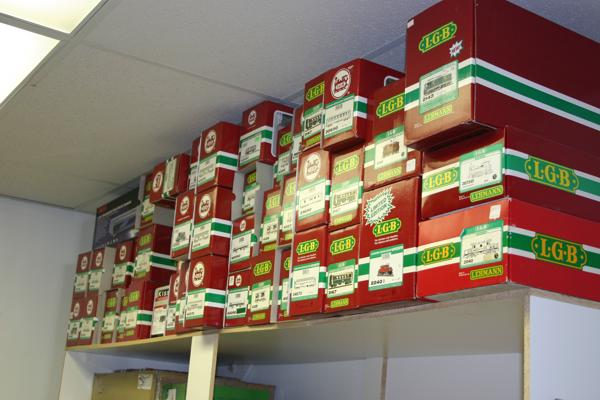Hi all,
Just in case some of you are wondering how I do reviews when I write for mags.
-
Since I only model the Swiss RhB (in both 2m - 1:22.5 and HOm - 1:87) in a specific era, I more or less restrict myself to items that fit.
-
I buy all my items at regular price - that’s the price everyone else pays, including taxes, shipping etc. etc. - at dealers’ of my choice. That way I don’t have to worry about getting special treatment! ***
-
I do the prototype research - own library on RhB, Internet, good contacts at the prototype railway.
-
I made my apprenticeship in a toolroom (Switzerland), worked as inspector in a really high-tech toolroom in Switzerland, worked 30 years in the high precision machine tool industry (20 years running my own service company). Quite a few of my former customers produced injection moulds for the model industry, others for various high-end industries with really tight tolerances. In short I know what types of machines are used and what can be done. Yes, I have often been amazed HOW it is done!
-
I actually measure the items I review, using the standard tools in the trade (machine tool trade that is, not model railway reviewer trade!) i.e. digital vernier, large conventional vernier, height gauge, micrometers and dial indicator. All measurements of the prototype are converted to Metric (sorry TOC) and the measurements on the review item are taken within +/- 0.1mm (that’s what I consider close enough for the purpose).
-
The measurements - length, width, height and whatever else is relevant for visual appearance and scale fidelity - are listed in a table. The major measurements L, W, H have a comparison to the prototype which lists the actual scale of the dimension, as well as how large the percentage error is. I also have a rating system that works on percentages:
+/- 1.0% or better : Excellent
+/- 1.1 to 4% : Very Good
+/- 4.1 to 7% : Good
+/- 7.1 to 10% : Passable
+/- 10.1% and above : Questionable -
Items are checked for performance characteristics - I’m in the process of building a testing ramp for Large Scale motive power in order to check what drawbar pull can be developed on which incline prior to slipping. Wheel sets are tested for concentricity and other runout (in a lathe), if they are wobbly enough.
-
Items are compared to the manufacturers information, manufacturing quality and design quality is inspected. (For qualifications check point 4!)
-
Design shortcomings are mentioned in the text, as are glaring errors in replicating the prototype. Since most manufacturers proclaim they produce model railway items , I take them at their word and the review is written as if a model is being scrutinized, not a toy.
-
I double check things, if there seem to be discrepancies!
*** There has only been one instance when that didn’t apply; a none RhB item which I couldn’t use anyway and it gets returned to the supplier as soon as the review appears.
I have never been asked “What did you really think of that item you reviewed?”, neither in person, on the phone or via email! But I have seen enough posts that exasperatedly exclaimed " HJ, tell us what you really think!!!"
And yes, I have received emails from RhB employees that found my reviews a bit too lenient. I accept that and try to do better next time. After all the qualified people on the railway know what the “model” should look like, some of them actually model in Large Scale and run the stuff on their own layouts, too.
Since I decided that reviewing a few NA proto items could be interesting, I assure you the same ten points above will apply. No shortcuts for this guy!!
Sorry if this was boring, but I feel one should mention once in a while how it should/could/can be done.


